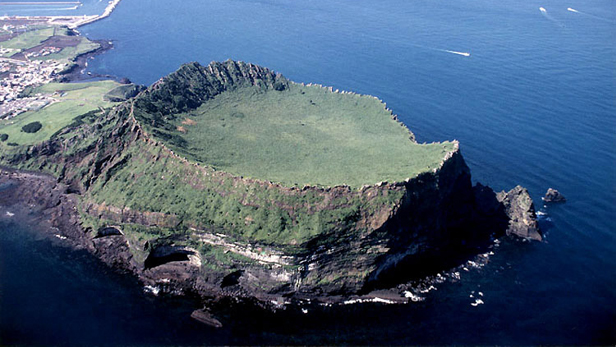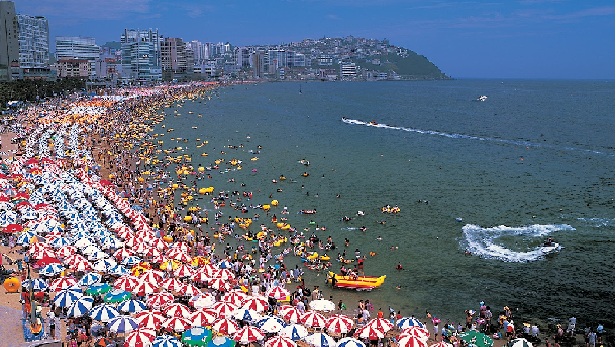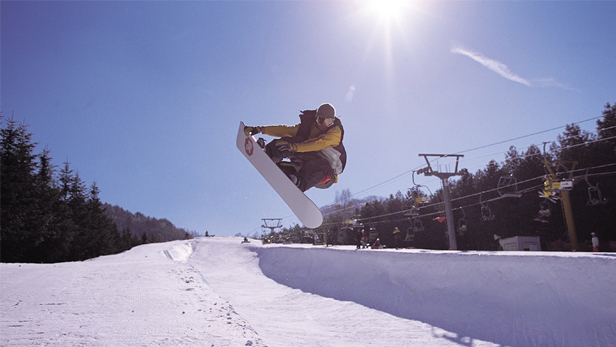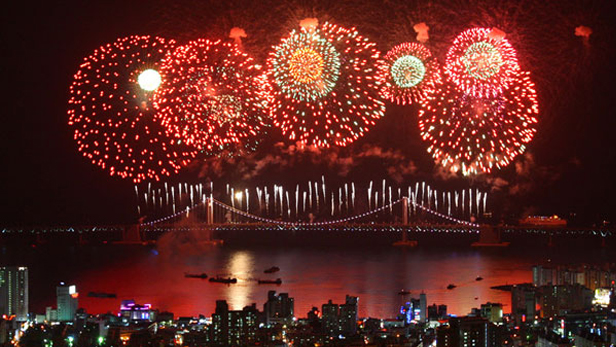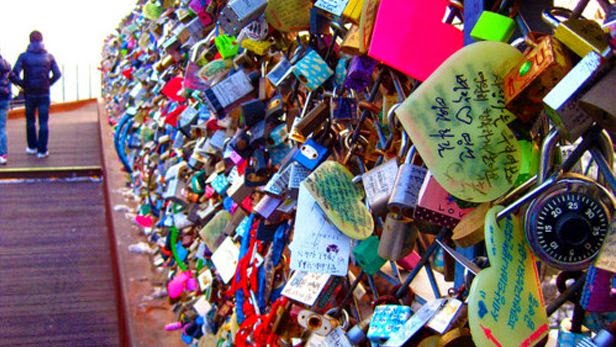10 Places Must-Visit in Daejeon, South Korea The capital of Chungcheongnam-do, Daejeon is known as a city of science and technology. Located in the heart of South Korea, Daejeon serves as a hub of transportation, which has an outstanding accessibility to major cities in South Korea within 90 minutes by KTX (Korea Train Express).
Daejeon not only embrace a fine culture and traditions, it has also experienced a new scientific and technological civilization that transformed Daejeon into the city with the advancement of science and technology. Daejeon has a slogan “It’s Daejeon”. “It's" is the backronym of: Interesting, Tradition and Culture, Science and Technology. As Daejeon was highly influenced by early dynasty in Korea, the significant of its cultural and historical facts are well preserved.
Little History of Daejeon
In early Korye Dynasty (고려시대), Daejeon was divided into four territories: Yuseong-hyeon (유성현), Deokjin-hyeon (덕진현), Hoideok-hyeon (회덕현), and Jinjam-hyeon (진잠현). The Daejeon area actually belonged to the Usul-gun (우술군) of the Baekje Kingdom, Bipung-gun (비풍군) of the Shilla Kingdom, and Yuseong-hyeon (유성현), Deokjin-hyeon (덕진현), Hoideok-hyeon (회덕현), and Jinjam-hyeon (진잠현) as a military strategic area. After all, the Daejeon area remained as a part of Hoideo-hyeon and Jinjam-hyeon during the Joseon Kingdom period. Both areas of Hoideok-gun and Jinjam-gun were merged with parts of Gongju-gun into “Daejeon-gun” on March 1, 1914. In fact, the Daejeon area was historically known as Hanbat (한밭), a native Korean term for “large field", during the Joseon Dynasty. A fertile basin surrounded by mountains and rivers was the origin of the name of Daejeon city.
Let’s discover Daejeon together!
1. Ppuri Park (뿌리공원)
 |
| Daejeon Ppuri Park (뿌리공원) |
Ppuri Park, also known as Root Park, is the only park constructed under the theme of filial piety(孝道) in South Korea as to trace the origins of Korean surnames and foster spirit of loyalty and filial piety. The park is occupied with unique 136 stone sculptures with the historical description of the family name that remind Koreans of their family lines. In fact, there are 14 family origins under a Kim surname!
According to Korean National Statistical office (2000), the number of Korean surnames rose to 275 family name and 3349 family origins. The park also features a variety of facilities like Jokbo Museum, ‘Jeonja’ 12 Zodiacal Animal Figures, Samnam Memorial Observatory, Deep-rooted Spring, ecological forest, ‘Jasanjeong’ octagonal pavilion, woods bathing area and grass square and waterside stage where various events are held. Ppuri Park is highly recommended for family trips and picnic.
2. Eunhaengdong Euneungjeongi Culture Street
 |
| Daejeon Eunhaengdong Euneungjeongi Culture Street |
Eunhaegdong, also known as Uineungjeongi Cultural Street, was once the center of the government administration, business and culture until 1980s. The main downtown street sometimes calls ‘Sky Road’ because of its amazingly immense ceiling of electronic panels which light up the night streets like the sun in the morning! With that, you can enjoy the great nightlife, shop cheerfully while listening to your favorite Korean songs. For shopper holic, you will get lost in a world of fashionable items, from clothes to sneakers. Eunhaengdong underground stores offer you a wide selection that you can barely stay calm and shop!
Tips: don’t remain in a shop more than 10 minutes, or you will end up buying all the clothes!
After shopping in downtown, don’t forget to grab some scrumptious bread from the most famous Daejeon-based Bakery and Cake Boutique, Sung Sim Dang. In fact, many Koreans purposely travel to Daejeon just for its fresh and mouth-watering breads and cakes! The recommended bakery for its shop is Twi-kim Soporo, which is golden-fried bread full with red bean paste. If you are lucky, you will have a chance to participate in some local events such as Uineungjeongi Festival, Youth Mime Festival and the Art and Cultural Street Festival.
3. Daejeon Expo Science Park (대전 엑스포)
 |
| Daejeon Expo Science Park (photo credit: 반석) |
Located in the northwestern of Daejeon, this was the place where the Daejeon Expo was held in 1993. The area has been renovated into a science theme park to commemorate the Deajeon Expo and to raise awareness of science and technology. The park includes the National Science Museum of Korea, Advanced Science & Technology Center, Technopia, Starquest, Earthscape, and Visions of Korea pavilions. Also, different themes of theatres and pavilions: a 3D theatre, an I-Max dome Theatre, a Simulation Theatre, Body World, the Electric Energy Pavilion, the Energy Pavilion, the Nature and Life Pavilion, the North Korea Pavilion, the Tower of Great Light, and also the world’s largest I-Max theatre is available.
At night, don’t miss the Hanbit Square or Expo Bridge. Visitors can experience a wonderful atmosphere and Daejeon night view with the colorful Music Fountain while strolling along the bridge. Indeed, this is one of the popular dating spots for Korean couples in Daejeon. During the spring, many people rent bicycles to ride or have picnic around the Expo Park to enjoy the cherry blossoms sightseeing. Other attractions near to Expo Park are Geology Museum, Currency Museum, Astronomy Observatory, and Yu-seong tourist special zone.
4. Currency Museum of Korea (화폐박물관)
 |
| Daejeon Currency Museum of Korea (화폐박물관) (photo credit: 박주현) |
The
Currency Museum of Korea is the first museum in Korea to be merely devoted to modern and ancient currencies. The museum has been opened to local and international visitors for the purpose to promote public acknowledgement of the nation’s currency. The museum is composed of a total of 120,000 pieces of coins in Korea and overseas, coins from the Late Joseon Dynasty
until the present, 80 kinds of commemorative coins, 88 kinds of ‘special money’, and postage stamps.
The museum comprises four exhibition rooms featuring the information and types of coins of different eras. Exhibition Room 1 offers a glance of coins from ancient and modern times that belonged to the Goryeo and Joseon dynasties, and learn about the process of banknote production in Exhibition Room 2. The methods to differentiate counterfeit money can be found in Exhibition Room 3 and Exhibition Room 4 displays a wide variety of stamps, medals and currencies from 120 countries. A broad collection of coins and materials from the pasts will further ignite your curiosity about the history of South Korea!
5. Daejeon History Museum (대전역사박물관)
 |
| Daejeon History Museum (대전역사박물관) |
The history of Daejeon mentioned in the introduction is just 0.1 % of the whole story! War History Museum comprises Joseon Dynasty relics of ancient documents, historical artifacts, Daejeon cultural property, and many more. Daejeon History Museum in equipped with a permanent exhibition hall, donated relics exhibition hall, planned hall, and city promotion hall. In the permanent exhibition hall, you can witness the Daejeon’s most precious cultural assets related to Confucian’s culture. The donated relic exhibition hall displays artifacts kindly donated by Daejeon residents and the planned exhibition hall offers several programs, performances, activities and exhibitions throughout the year. If you love to understand more about Korean history, the Daejeon History Museum is the perfect place to visit!
6. Daecheongho Lake Obaengni-gil Tour (대청호오백리길)
 |
| Daejeon Daecheongho Lake Obaengni-gil Tour (대청호오백리길) (photo credit: 대전 브랜드 마케터) |
Daecheongho Lake is an artificial lake, stretching across Cheongju-si, Okcheon-gun, and Boeun-gun. The lake provides Deajeon City and Cheongju City with drinking water, living water, and industrial water. The reservoir is able to store a water volume of 1.5 billion tons, making the reservoir as the 3rd largest lake in Korea. Surrounded by mountains, the area is a popular driving route and tree-lined roads are full with flowers during spring, and colored by maple leaves during autumn. Upon reaching the top of the observatory, the entire environment of the lake is spectacular and sometimes, you can catch a glance of migratory birds and resident birds during summer season.
When visiting Daechongho Lake, don’t forget to follow Daecheongho Lake Obaengni-gil Tour. There are a total of 27 trekking courses that you can select based on your preference. Each course will offer the visitors experience the ecology and natural beauty of the six sections of Daecheongho Lake Obaengni-gil Trail in the vicinity of Daejeon. This tour is highly recommended to those who are fans of the natural scenery during seasonal change.
7. Sikjang Mountain (식장산)
 |
| Sikjang Mountain 식장산 Daejeon (photo credit: Naraa) |
Mt. Sikjangsan, is the highest and largest mountain in Daejeon. It is 623.3m above sea level and the environment is surrounded by pellucid mountain valleys, condensed forests with varieties of rare plants. As a piece of area in the Secheon Park of Sikjang Mountain was designated as Ecological Preservation Zone, extensive efforts of nature conservation have been implemented to protect the natural ecology of Daejeon city from destruction.
Although it is not easy to reach the peak, please note that Sikjang Mountain is still the most popular dating spot during night time where many couples enjoy the romantic and cozy moment. At the foot of mountains, there are also a few notable temples such as Gosansa Temple constructed during Silla Dynasty and Gaesimsa Temple built during period of King Seongjong, where people can picnic under the spring trees and experience cherry blossoms in full bloom!
8. Yuseong Hot Spring (유성온천)
 |
| Daejeon Yuseong Hot Spring (유성온천) (photo credit: 사람을 남기는 집) |
Relaxation is always the ultimate purpose of traveling. There are no other activities that provide much comfort that a hot spring! The Yuseong Hot Spring is located in Yuseong-gu of Deajeon City, is quite well-known for hot springs. Well, there is a reason behind the story. Yuseong Spa was firstly discovered during the Baekje Kingdom, where wounded soldiers recovered after bathing in. These hot springs not only contain an abundant amount of calcium and sodium, but also possess a therapeutic effect that helps maintain healthy skin and alleviate skin irritations. Yuseong Spa is also a popular spot for both youth and elderly people, especially during winter season when they come with their family. Foot bath experience in Yuseong Hot Spring will definitely reduce your tiredness and improve your skin condition!
9. Dongchundang (동춘당): Daejeon Hoedeok Dongchundang Park
 |
| Dongchundang (동춘당) Daejeon Hoedeok Dongchundang Park |
The residence house of the Daejeon Hoedeok Dongchundang Park was built by Jungil Song, the father of Dongchundang who was an acknowledged politician from the Joseon Dynasty. ‘Dongchun’ means ‘lively spring’. The house was assigned as the National Cultural Treasure number 209 and the structure has some similarities with the buildings of the late Joseon Dynasty.
Started from 1996, Dongchundang Cultural Festival is held every April with a variety of events: Sungmojerye, studying at Hyanggyo, national calligraphy competition, street festival, and so on. This festival was established to remember the communal spirits of Hoedeok residents and educate people about the values of traditional culture. Until now, the life history of Eunjin Song (surname of Jungil, Song) is passed down from one generation to another and it is a priceless asset to be kept.
10. Dunsan-dong (둔산동)
 |
| Daejeon Dunsan-dong (둔산동) (photo credit: Soulfanda) |
Although Daejeon is not as populated as Seoul, Daejeon also has an exotic nightlife. In Dunsan-dong, you can find a lot of places to meet new friends or hangout with your closest buddies. It is also a hot spot where people gather after finishing their work on Friday to release their stress! Recommended clubs or lounges in Daejeon are Bubi Bubi, a Western-style dance club; Sponge, local clubbers’ favorite; Yellow Taxi, relaxing and international lounge. Don’t forget to order a drink along with Anju (bar snacks) to get along with locals!
Who said that you can only drink and have fun in Hongdae, Seoul?
There are also plenty of unlisted Daejeon attractions like National Science Museum, Jangtaesan Recreational Forest, Hanbat Arboretum, Daejeon O World and so forth. Still having no clue on where to visit in Daejeon? Drop us a comment and we will guide you :)
Stay easy and discover Daejeon with LeX Paradise!











